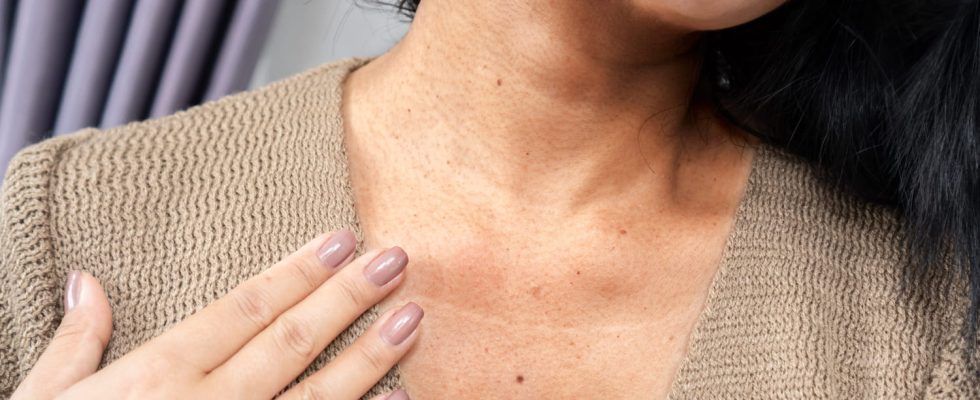It generally appears in the neck or nape of the neck, according to this surgeon.
Diabetes is a chronic disease that occurs when the pancreas does not produce enough insulin, the hormone that regulates blood sugar, or when the body is not able to use it effectively. In France, there are around 4 million diabetics, estimates the French Diabetics Federation. This disease exposes you to a higher risk of coronary, vascular, heart or kidney diseases, hence the importance of detecting it early and spotting warning signs such as intense thirst, a frequent need to urinate, fatigue. persistent or suddenly blurred vision. But not only that: a lesser-known symptom could also be a harbinger of diabetes…
Watch the appearance of your skin and be wary of skin changes. “Many people may not realize that certain skin conditions can be linked to underlying problems such as insulin resistance, which is a hallmark of prediabetes and type 2 diabetes.”explains in the Huffington post English Dr Maksims Mukans, bariatric surgeon. Among these conditions, there is acanthosis (or Acanthosis nigricans), a rather rare dermatosis which can reveal insulin resistance and which can occur before the development of diabetes. Several scientific studies, including one published in 2010 in the Journal of American Board of Family Medicine already confirmed this association. Acanthosis corresponds to a thickening and darkening of the skin which most often develops in the armpits and neck. In other words, the skin under the armpit or at the nape of the neck is blackened or has a “leathery” appearance. “Anyone who notices such a change in their skin should consider seeing a healthcare professional for further evaluation. Ignoring this sign could play into the hands of a silent killer,” alerts the surgeon.
Among other skin changes, observing how quickly everyday wounds can take to heal can also help identify disease because diabetes can impair the body’s ability to heal wounds. Slow healing of cuts, bruises or infections, especially on the feet, can be a warning sign of compromised blood flow and nerve damage associated with this condition. Early detection of diabetes is essential in the management of the disease: “Recognizing these warning signs and seeking prompt medical attention can significantly improve outcomes and reduce the risk of complications associated with diabetes,” he concludes.
